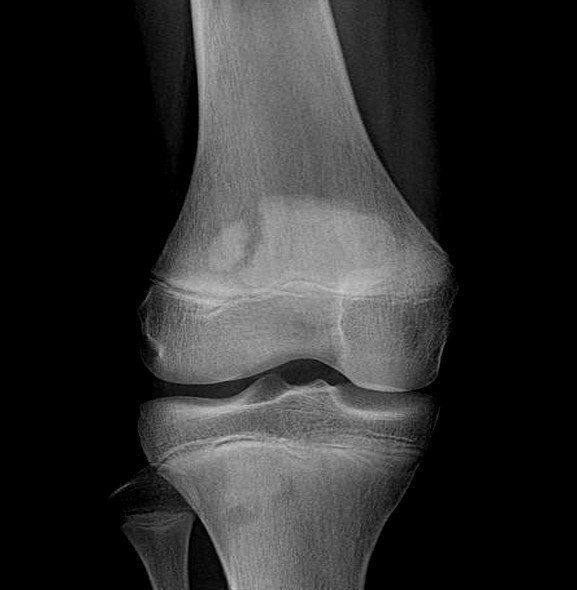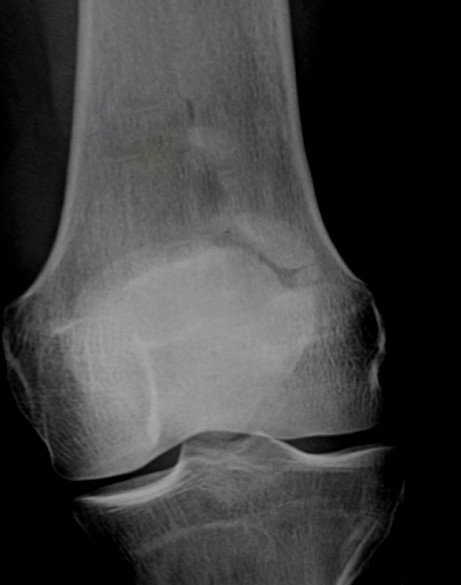Bipartite Patella
What is a Bipartite Patella?
This is a medical condition that affects your patella, also known as your kneecap. It is when your patella occurs as two separate bones instead of fusing together as it would normally do during early childhood. Instead of one bone it stays two separate bones that are joined by a piece of fibrous tissue. Sometimes most of the bone will fuse but just a small fragment does not fuse. It occurs in at least one percent of the population but the percentage could be higher because the condition usually does not have any symptoms. Males are more affected by bipartite patella than females.
Anatomy
To help you understand the condition a little better it helps to know that your knee is the meeting place of two important bones in your leg, which are your tibia, the shinbone, and your femur, the thighbone. Your patella is the moving bone that sits in front of your knee and is wrapped inside a tendon that connects your lower leg bone to the large muscles on the front of your thigh.
Symptoms
Although this condition does not usually have any symptoms there can sometimes be a place, or bony bump, where the bone sticks out more on one side of your knee than the other side. If the fibrous tissue between the two bones becomes inflamed you could start to have painful symptoms over your patella. This pain is usually described as a dull ache and there could also be some swelling.
Moving your knee can also be very painful, especially when you are bending it. Climbing stairs, weight training, squatting, or any strenuous activity can aggravate your cause causing increased symptoms such as tenderness, swelling, and increased pain. If you are a runner, running downhill can also increase these symptoms. If most of the bone fused but there is still a fragment that did not it could rub and scrape against your surrounding muscle, bone, and connective tissue causing soreness, loss of motion, pain, and swelling.
Causes
Bipartite patella is considered a congenital condition, which means it is present at birth. Your patella starts out as a piece of fibrous cartilage but as you grow older it turns into bone as part of the process of growing. Most bones have one primary ossification center, which is where bones form but in some bones there is a second ossification center. In your patella the second ossification center is the upper outer corner where the problem usually occurs but it can happen along the side of your patella or along the bottom.
Diagnosis
Many times when bipartite patella is diagnosed it is an incidental finding, which means that an x-ray was taken of your knee for some other reason and it was seen when they looked at your x-ray. At times it has been misdiagnosed as a fracture of your patella. Bipartite patella usually affects both knees when they take an x-ray of the other knee it will show the same medical condition.
Treatment
Most of the time there is no treatment necessary but if you start to have symptoms you may need to have it treated. There are two ways in which bipartite patella can be treated, which are with surgery or using non-surgical treatments.
Nonsurgical treatment
This is the form of treatment that is usually tried first. This type of treatment involves using over-the-counter non steroidal anti-inflammatory drugs (NSAIDs) like ibuprofen, activity modifications, and rest. You should avoid excessive use of stairs, resisted weight training and deep flexion like squatting. If the fibrous tissue has separated it can be treated with immobilization for a month to six weeks. Your knee would be placed in full extension by using:
- A knee immobilizer – the immobilizer is a splint that is removable and is usually only removed to wash the leg but stays on the rest of the time.
Cylinder cast - Dynamic patellar brace – this brace immobilizes your knee in a straight-leg position with limited flexion, which is up to thirty degrees. Using this brace will reduce your pain by decreasing the pull on your patella from the large muscles on the front of your thigh.
Once it has healed and you no longer need the brace or case it is removed and you will start on a prescribed exercise program of stretching exercises for your large muscle on your thigh, also referred to as your quadriceps muscle. If after three months of nonsurgical treatment there are no signs of improvement then you may need surgery. Nonsurgical treatment is often used to help with pain from overusing your knee.
Surgery
If the bipartite fragment that did not fuse is small then the surgeon will remove the smaller fragments of the bone. If the fragment is larger and also contains some of the joint surface then the surgeon may try to force the two fragments to fuse, or heal together. This surgery is called internal fixation In this type of surgery the first thing that is done is to remove the connective tissue between the two fragments and then using a metal pin or screw the two bony fragments are stabilized or held together. The two fragments will fuse together creating a solid connection between them. When having this surgery it may require you to endure several weeks of immobilization. One drawback of this surgery is that you may notice knee stiffness after immobilization. In order to regain motion and strength after the bones have fuse you will need to have physical therapy.
Rehabilitation
Nonsurgical rehabilitation
Most will respond well to immobilization and activity modifications so when your x-rays shows that complete ossification of the bone fragments you will be able to start doing regular activities.
Recovery
When it is a simple surgery you should feel prompt pain relief and have a quick recovery. If you are an athlete you can expect a stable knee and full range of motion and after one to two months you should be able to return to normal activity but if it was not a simple surgery it may take longer. With athletes and runners who have experienced an extended time of immobility, loss of normal joint motion, patellar tracking problems, and atrophy and weakness of their muscles may have to undergo a special prescribed rehab program. They will start their rehab program with quadriceps strengthening and range of motion exercise and then move forward with other exercises until they have full strength and range of motion. Because of so many months of activity due immobilization they may need to also do an aerobic program to help improve their cardiovascular endurance level. The rehab program often includes proprioceptive exercises, which will help to restore their joint’s sense of position and are necessary to help prevent further injuries and restore normal movement.
Pictures
This is how Bipartite patella looks like…

